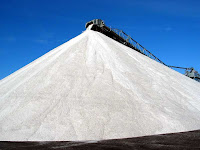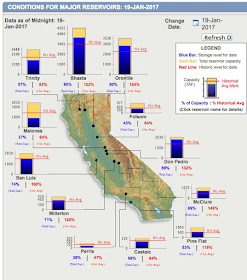If I was the Mayor of Portland I would order some salt and be ready so spread it BEFORE any snow hits.
Portland Oregon Needs This
Here is the latest high resolution forecasts (and yes, there is still considerable uncertainty in the forecast).
To get snow and freezing rain, one needs cold air. That is coming, starting tomorrow. The following are a series of forecast maps from the UW high resolution prediction system, showing sea level pressure (solid lines) and temperature (shading, blue is cold).
4 PM Monday: mild (green color) air over most of the region.
4 PM Tuesday, an influx of cold air is occurring in Washington, northern Idaho, and Montana.
Cold air is in place east of the Cascade crest and a very large difference in pressure have developed across the Cascades. Strong easterly winds would be occurring in the Columbia Gorge.
Thursday, 4 PM. Little change east of the Cascades but warmer air to the west.
So plenty cold for snow east of the Cascades. Cold air in the Gorge and over the eastern side of Portland. Windy and cold in the Washington Cascades passes.
On Thursday and early Friday an area of precipitation will move northward into the region (see the 24-h precipitation ending 4 AM Friday For most of the west, this will fall as rain, but in the Gorge and immediately downstream of it,there could be snow and freezing rain.
The 24h snowfall prediction ending 4 AM Friday suggests this...and if anything the model is probably underplaying the cold air coming through the Gorge. Substantial snow along the eastern slopes of the Oregon Cascades.
It is too early to have too much confidence in this snow forecast, but the cold air east of the Cascades is pretty much a sure thing, as is some frozen precipitation in the Gorge. Keep tuned and don't hold the salt if you are in Portland.















































